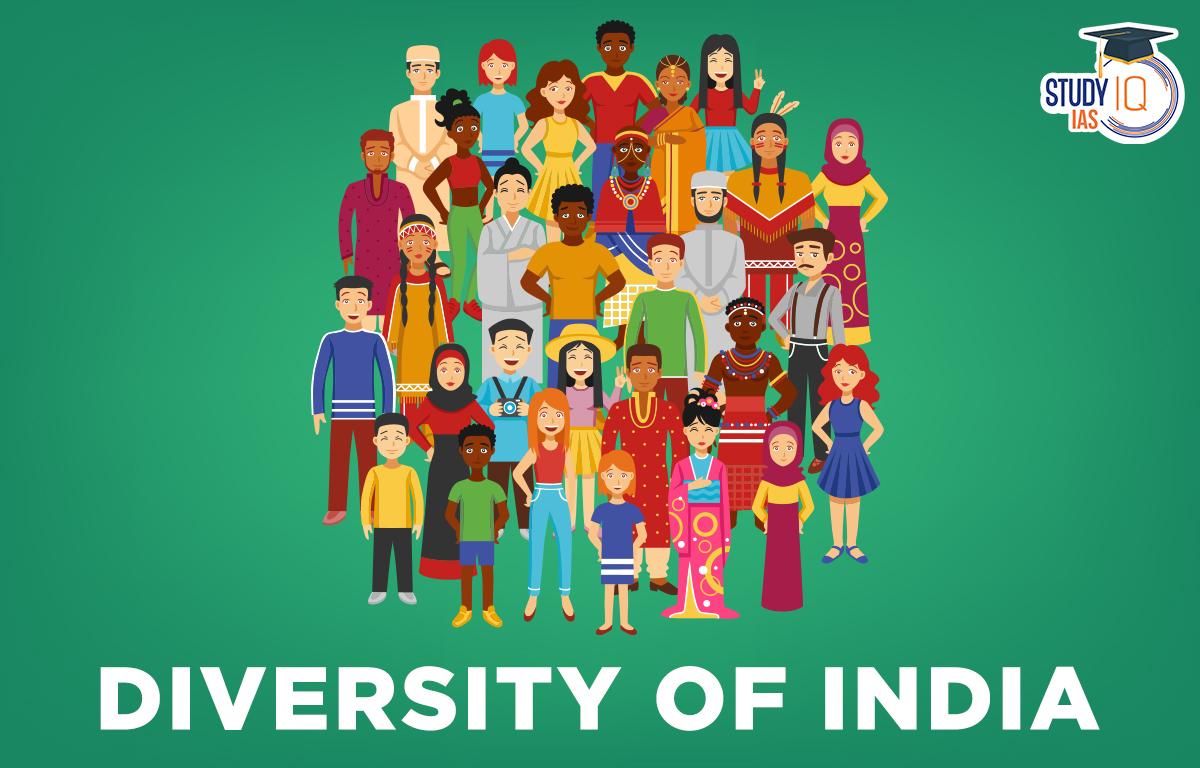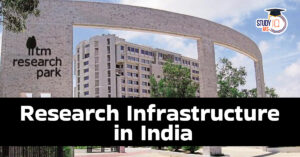Table of Contents
India is renowned for its rich diversity, encompassing a vast array of cultural, linguistic, religious, and social variations. This diversity enhances the lives of its citizens and forms an integral part of Indian society. For UPSC aspirants, understanding this diversity is crucial as it is a significant topic in the Indian Society segment of the UPSC syllabus. Engaging with UPSC Mock Tests can also aid candidates in preparing for the examination effectively.
What is Diversity in India?
Diversity refers to the differences among people that manifest in various forms, including linguistic, cultural, religious, and social distinctions. In the context of India, it represents the vast spectrum of racial groups, religions, languages, castes, and cultural traditions. The concept of “unity in diversity” underlines that despite these differences, there exists a shared identity that fosters harmony among India’s diverse populace.
Also Read: Caste System in India
Types of Diversity in India
1. Cultural Diversity
India’s cultural landscape is a rich tapestry of various traditions, languages, religions, and customs, shaped by centuries of interactions. Each region contributes uniquely to this cultural mosaic, creating a country with a vibrant array of practices and beliefs.
2. Religious Diversity
India is often referred to as the ‘land of diversity’ due to its multitude of religions. The demographic distribution is as follows:
- Hindus: 82.41%
- Muslims: 11.6%
- Christians: 2.32%
- Sikhs: 1.9%
- Buddhists: 0.77%
- Jains: 0.41% Additionally, various tribal groups practice animism and other indigenous faiths. Within these religions, multiple sects exist, contributing to India’s pluralistic society.
3. Language Diversity
India is home to numerous languages, with the two primary language families being:
- Indo-Aryan Languages: Spoken by approximately 75% of the population.
- Dravidian Languages: Spoken by about 20%.
India ranks second globally in linguistic diversity, with languages from other families such as Austroasiatic and Sino-Tibetan also represented.
4. Caste Diversity
The caste system in India comprises two main categories:
- Varna: Refers to the four broad categories – Brahmins, Kshatriyas, Vaishyas, and Shudras.
- Jati: Refers to the many sub-castes or groups within these categories, often linked to specific occupations.
This system has undergone transformations, including a process known as “Sanskritization,” which allows for upward mobility among castes.
5. Ethnic Diversity
India’s ethnic diversity is marked by various regional customs, traditions, and practices, leading to distinct forms of art, music, dance, and architecture across different communities.
6. Geographic Diversity
India’s vast geographical landscape includes deserts, mountains, forests, rivers, and coastlines, contributing to its diverse climatic conditions and agricultural practices. This diversity influences the lifestyle and cultural practices of different regions.
Diversity of India and Constitutional Provisions
A single person with a constitutional identity is chosen to lead the complete country. Furthermore, regardless of their age, gender, class, caste, or religion, all citizens are guaranteed certain basic rights under the Constitution, even though the majority of states adhere to a standard three-tier structure of government.
Religion India is known for its tolerance, which makes it possible for a wide variety of beliefs to coexist there. The freedom of faith and practice is guaranteed by the Constitution itself. The state has no official state religion and gives all religions similar priority. The freedom of mobility guaranteed by Article 19 (1) (d) of the Indian Constitution promotes a spirit of brotherhood and unity among the populace.
The uniformity of the law, penal code, and administrative duties are additional factors that contribute to consistency in the criminal justice system and policy execution (such as All India Services). By enabling “one country, one tax, one national market,” the Goods and Service Tax (GST) has cleared the way for regional cohesion. Additionally, Article 21 of the Indian Constitution promises freedom of commerce, trade, and intercourse relations within Indian Territory.
Diversity of India From North to South and East to West
- In India, spirituality and faith are very significant. From Badrinath and Kedarnath in the north to Rameshwaram in the south, Jagannath Puri in the east, and Dwaraka in the west, religious sites and sacred rivers can be found all over the length and width of the nation.
- They have a strong connection to the age-old practice of pilgrimage, which has always attracted people to various parts of the country and given them a sense of geo-cultural identification.
- Because people from all over the country attend fairs and festivals, they also function as integrating factors. Similar to how Muslims and Christians celebrate Id and Christmas, so do Hindus across the country on Diwali. Interreligious holidays are also celebrated in India.
- The entire Indian subcontinent’s flora and fauna, agricultural pursuits, and way of life, including vacations, are impacted by weather integration through the monsoon season. The country as a whole enjoys sports and movies, which act as unifying factors.
Diversity of India and Associated Threats and Challenges
Diversity of India faces certain threats and the social fabric of the society gets disrupted by the following means and modes are mentioned below:
Regionalism
In contrast to national interests, regionalism frequently emphasizes the interests of a specific area or region. It may also harm national unity. Regional demands and the resulting unrest have a negative impact on law and order.
Divisive Politics
Politicians will occasionally invoke ascriptive identities like caste, faith, etc. to win support. Violence, feelings of distrust, and suspicion among minorities can result from this kind of polarizing politics.
Development Imbalance
The backwardness of a region can be brought on by uneven socioeconomic growth, poor economic policies, and the resulting economic disparities. As a result, this may spark acts of violence, ignite migration surges, or even fuel separatist demands. For instance, the North East area has experienced a rise in secessionist demands and tendencies due to the region’s economic disadvantage.
Ethnic Differentiation
Conflicts between various ethnic groups have frequently resulted from ethnic differences, particularly as a result of issues like employment competition, a lack of resources, identity threats, etc. For instance, Bodos and Muslims who understand Bengali frequently fight in Assam. The Son of the Land doctrine, which links people to their place of birth and bestows upon them certain advantages, rights, roles, and obligations that may not apply to others, has served to emphasize this.
Geographical Isolation
Geographic isolation can also result in identity problems and calls for secession. Because the Siliguri corridor, which connects the North-East to the rest of the nation, is so narrow, the region is physically isolated from the rest of the nation. The area is relatively more backward than the rest of the nation and has poor infrastructure. This has led to several incidents of secession and cross-border terrorism, among other things.
Inter-Religious Conflicts
Interreligious conflicts damage the secular fabric of the nation as well as relations between two communities by sowing distrust and dread.
Inter-State Conflicts
This may cause feelings of regionalism to develop. Additionally, it may have an impact on interstate commerce and contact. Consider the conflict over the Cauvery River between Tamil Nadu and Karnataka. External forces like terrorist organizations or extremist groups can occasionally instigate violence and sow feelings of secession. Inter-Services Intelligence (ISI), for instance, has been charged with aiding and training mujahideen to engage in combat in Jammu and Kashmir and fostering separatist sentiment among local organizations.
Diversity of India UPSC
The problem, not diversity itself, is how it is handled in Indian culture. Problems like regionalism, communalism, and ethnic conflicts have arisen as a result of an unfair distribution of the benefits of growth or an undervaluation of some groups’ cultures. As a result, the Constitution and its principles must be the cornerstone of our community. Any society that has tried to become homogeneous has eventually experienced stagnation and decline. Students can read all the details related to UPSC by visiting the official website of StudyIQ UPSC Online Coaching.


 Jallianwala Bagh Massacre, Date, History...
Jallianwala Bagh Massacre, Date, History...
 Research Infrastructure in India for its...
Research Infrastructure in India for its...
 Maternal Mortality Rate in India, State ...
Maternal Mortality Rate in India, State ...





















